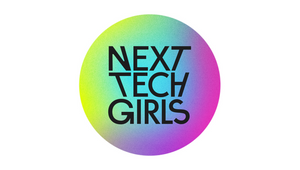
Seamless, Frictionless and Personalised: How Ecommerce Is Evolving to Give Customers What They Really Want

Having navigated the acceleration of ecommerce during the pandemic, a disrupted supply chain and rising costs, retail brands competing in this challenging market need to go the extra mile to build and strengthen customer relationships.
Four out of five customers place the same emphasis on flawless engagement as on product quality, according to a report from Epsilon called The power of me: The impact of personalisation on marketing performance.
We also know that customers are willing to share their data to create a more personalised experience and are more likely to shop with brands that provide relevant experiences. There are real opportunities here, which retailers ignore at their peril.
Customer experience is the new frontier, and creating a seamless, frictionless and personalised customer journey is the only way to succeed and drive sustainable growth in this highly-competitive market. Retailers can achieve this and become future ready by taking an omnichannel approach, using data, martech and insight to create relevant and meaningful connections, and bring together both on and offline experiences.
What customers want
The customer has to be the north star, but placing them at the heart of your business means really understanding what they want from you.
By using data and insight to create meaningful, connected experiences, retailers have seen revenue grow 36% faster. As a consumer, I love it when I feel understood by a brand. I recently received an email from Nike informing me that a new store was opening nearer to my home than my usual shop. This email was especially relevant as I’d previously expressed an interest in running, and the email informed me that there was a running specialist in store. A follow up email directed me to the Nike Running Club App, which I wasn’t aware of but absolutely signed up to.
I loved that Nike took the time to let me know how the brand could maybe make my life easier and linked me to a hugely relevant experience to improve my running. It already knows that I am a woman and a runner; connecting that with my address has taken our relationship a step further. As a customer I feel there is value in my sharing that data with them. To really seal the relationship, a few weeks later I received a 25% birthday discount (on any product). Now, that is what you call a value exchange, all for completing a few questions as part of my initial app set up experience.
Getting under your customer’s skin means drilling into your data and analytics first, then blending it with qualitative and relevant external or social insights. This builds up a trusted single customer view through what they are buying, how they are buying it when they buy it and what they might want from you next.
In our experience, a solid base to build out your customer experience is focusing on speed, ease of use and thoughtful, but not creepy, post-purchase customer relationship building (think of my Nike experience).
What brands need to do (and who’s doing it well):
1. Capture data and insight in a usable way.
It is essential to bring data and insight together to understand existing customer needs and anticipate what they will need in the future. Tesco Clubcard is a great example – the current ‘Clubcard Price’ activity brings together a customer need (cheaper prices) and a business objective (collect more data). This is especially mutually beneficial considering the cost-of-living crisis.
2. Connect: platforms, data, insight and internal departments to deliver meaningful connections.
Peak customer frustration comes when customers have shared their data or feedback which brands seemingly ignore when they communicate. Recently a single, male colleague had signed up to receive comms from a new brand and within a few weeks received an email promoting a new bra! At no point had he expressed he was female (quite the opposite) or browsed women’s clothing as part of his logged-in experience.
There is also a connection between departments that needs to happen to break down silos to ensure platforms and processes also align to reduce consumer friction. Marketers can bridge this gap in many organisations. There will always be a tension between teams; ultimately, that can be good for both the customer and the business, but it is more important to unite your teams behind a common goal – the customer need.
3. Create opportunities for trials (and work with your data team to ensure the results will be statistically significant).
Marketers often forget that in the digital world there are ample opportunities, to do what I call “try before you buy”. Running pilots, A/B testing, multi-variant testing and co-creation workshops with customers mean that we don’t need to run a big campaign and hope for the best. We have the power to test, learn and optimise. During my time at Amazon, we were encouraged to test what we called ‘crazy ideas’ (data and insight backed of course) and hypothesis to small customer clusters, to learn from them.
4. Care – show you cared to address customer needs.
A lot of brands say they are customer centric but do little to show it. BT/EE is a brand that does this well. We recently worked on a PhoneSmart campaign for BT/EE, where we educated children getting their first phone on how to stay safe and be kind online. While a child’s first phone opens the door to a world of wonderful content and connections, it can also be a big worry for parents as children are exposed to online dangers. To ensure this activity was kind and inclusive we made it available to non-EE customers. This campaign was highly successful, receiving great feedback from parents and kids alike. It demonstrates how brands can do something meaningful for society which will help foster a positive relationship with existing customers and prospects moving forward. I’m sure many kids and parents will now associate something concerning with a fun, positive, reassuring experience that EE has helped deliver.
We’re all working towards the holy grail of the right message reaches the right customer via the right comms channel at the right time. And the above, admittedly no small feat, will help get you there.















